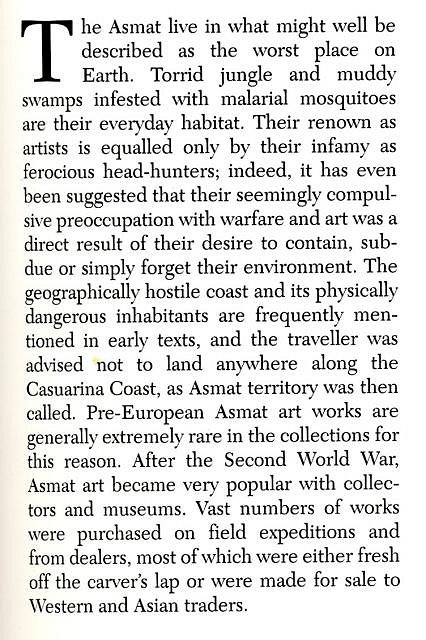B

bigbrotiki
Tiki Socialite
Tiki Island, above the Silverlake
Joined: Mar 25, 2002
Posts: 11621
|
B

On 2010-02-23 17:34, JOHN-O wrote:
Wait, I'm confused.
--We know-- :) SK
Wouldn't the appearance of Melanesian (physical) art coincide when Oceanic Arts started producing the stuff? I can see where the early Polynesian pieces might have been authentic art from Hawaii but a place like PNG was rarely traveled (as it still is today).
--O.A. certainly played an important part, that is why I mention and show them in my opening post. I will ask them WHEN they carved their first PNG pieces, probably BEFORE they travelled there themselves in 1960. The book "Oceanic Art" (which they used as a blueprint for many of their pieces) was published in 1954. -- SK
Surely the first Melanesian objects appearing in U.S. restaurants and bars couldn't have been authentic.
--I never said they were. But just like us new Tikiphiles, the deeper the active members of the mid-century Poly pop generation (at O.A., the Mai Kai, Trader Vic) got into their subject matter, the more they appreciated authentic native art...and PNG carvings were the only ones that were available and affordable. -- SK
Also I'm guessing all of the shield/spear iconography appearing on motel signs, etc. was inspired by the first American carver(s) to copy the look from Oceanic Art books. Back then, what motel developers even knew of the culture they were borrowing from? They wouldn't have cared whether it was Polynesian, Melanesian, or African, as long as it vibed "exotic".
--I never said they cared. But we do now, we silly kooks. -- SK
--Also, to clarify how "authentic" the non-American carved PNG pieces that were used in Tiki temples really were, here the clipping I posted earlier in Babalu's PNG post, the part relevant to this thread is the last two sentences:

...showing that these pieces were not ancient, pre-contact artifacts, but a product made in modern times, its production fueled by the demand of the primitive art craze in the Western world at that time. --SK
[ Edited by: bigbrotiki 2010-02-24 07:55 ]
|